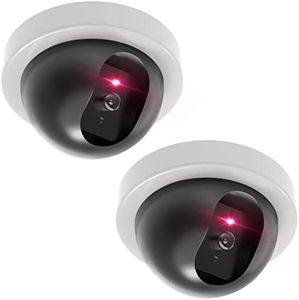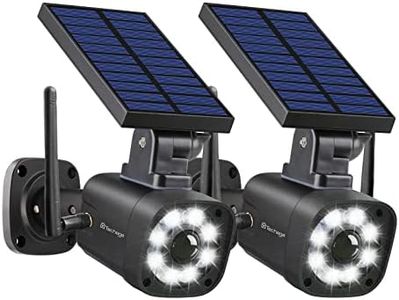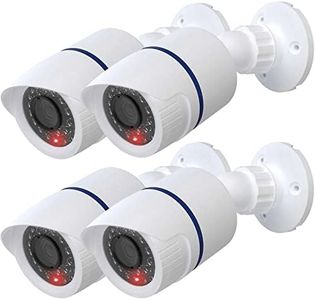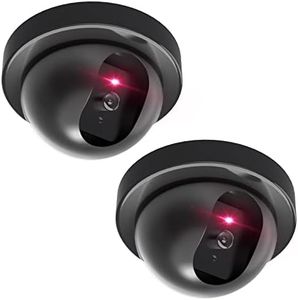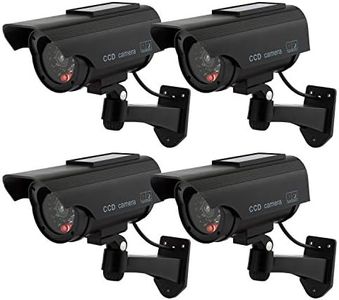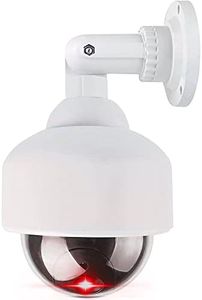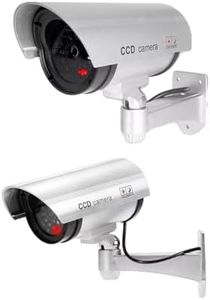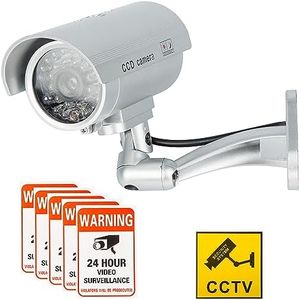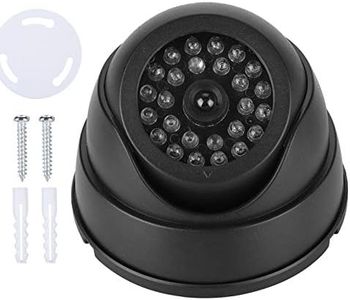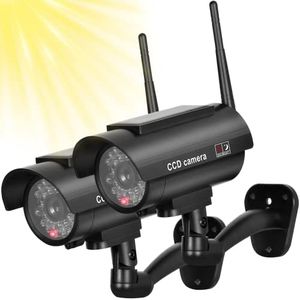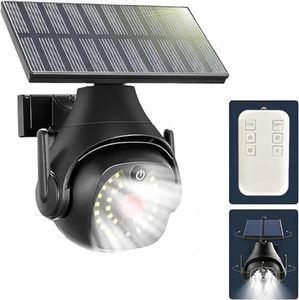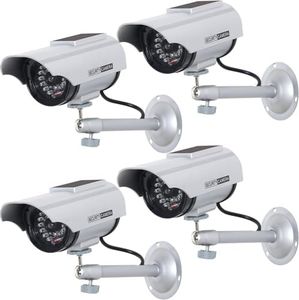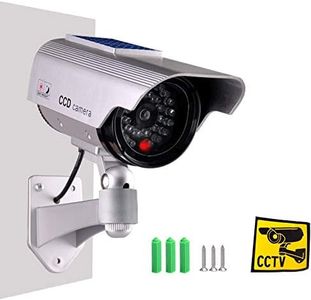We Use CookiesWe use cookies to enhance the security, performance,
functionality and for analytical and promotional activities. By continuing to browse this site you
are agreeing to our privacy policy
10 Best Fake Security Cameras
From leading brands and best sellers available on the web.Buying Guide for the Best Fake Security Cameras
Choosing a fake security camera can be a smart way to deter unwanted visitors without the cost and complexity of a real surveillance system. The goal is to select a model that looks realistic enough to fool potential intruders but is easy to install and maintain. Understanding the key features and what they mean for your needs will help you pick the best option for your home or business.Appearance RealismAppearance realism refers to how closely the fake camera resembles a real one in look and feel. This is the most important aspect because the main function of a fake camera is to trick people into believing they are being watched. Some fake cameras have blinking lights, visible wires, or even faux lenses to enhance realism, while others might look too simple or ‘toy-like.’ When making a choice, examine the materials and details: metal housings and glass lenses typically look more genuine than plastic with minimal details. If your property already has some real cameras, try to match the look for consistency. If not, select one that matches commonly used real security camera styles in your area.
Presence of LED LightsMany fake security cameras come with flashing or steady LED lights meant to mimic the small indicator lights on real cameras. This can help catch attention at night or in low-light areas and increase the belief that the camera is operating. However, real cameras often don’t have visible lights, so too many bright, blinking LEDs might raise suspicion. If your goal is daytime deterrence, lights may not be necessary, but for night or poorly lit spaces, a subtle red LED might be useful. Assess where you’ll install the camera and what would look natural in that environment.
Mounting OptionsMounting options refer to how and where you can place the fake camera—ceiling, wall, corner, or outdoor pole. Some models come with mounting hardware and can be placed outdoors, while others are designed only for indoor settings. Consider your needs: if you want the device to mimic an outdoor security system, look for models with weather-resistant construction and adjustable brackets for different angles. For indoor use or in covered spaces, lighter or more basic mounts may suffice. Always ensure that the mounting style matches your intended location for the most convincing appearance.
Weather ResistanceWeather resistance describes how well the fake camera can withstand elements like rain, wind, or sunlight. Outdoor installation requires this feature for longevity and to maintain the camera's realistic look over time. Weather-resistant models have tighter seals, sturdier build quality, and materials that don’t easily fade or crack. If you are installing indoors, this feature is less critical, but for any device exposed to the elements, ensure the model is clearly rated for outdoor use.
Size and VisibilityThe size and visibility of the camera influence both how noticeable and how believable it is. A very small or hidden device might go unnoticed, reducing its deterrent effect, while an overly large or oddly placed camera can appear out of place and suspicious. Assess the typical size and shapes of genuine cameras in locations similar to yours. The camera should be easily seen from a distance, but not so conspicuous that it looks fake or out of place. Think about the area you want to cover and pick a size and placement that balances attention and realism.
